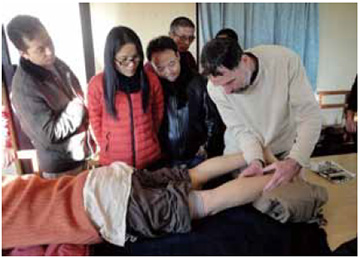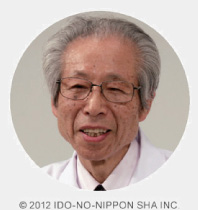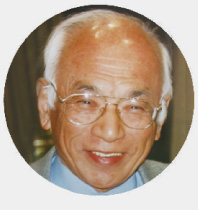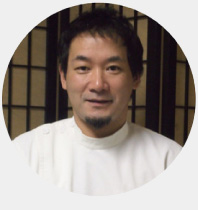TESTIMONIAL
HOME > TESTIMONIAL > Brown, Stephen

Brown, Stephen
L.Ac.
Seattle Institute of Oriental Medicine certified instructor
My Take on New Pyonex
I practice Japanese styles of acupuncture, moxibustion and shiatsu in the Seattle area and I have been following in the footsteps of my mentor Shudo Denmei. Like Dr. Shudo I use intradermal needles often in my practice, and I have also used press tacks (pin type intradermals) in my own way to enhance my treatments. I was delighted when Dr. Shudo introduced me to a new generation of press tacks called New Pyonex several years ago. Using New Pyonex has raised my acupuncture to a new level. There are many advantages to New Pyonex over the conventional press tacks and intradermal needles, but the main ones are as follows:
- individual packaging (less chance of contamination)
- small size of needle (less stimulation = less discomfort/ pain)
- plastic needle head (easy to see which side is up)
- small tab to hold tape (easy to adjust needle placement)
Let me explain how these features make New Pyonex the top choice among press tacks.
- I have used many varieties of press tacks, some that come in packages of five or ten. I have often had to throw away packages that were less than half used because I would put them somewhere and open a new package and come across them later. I can never be sure about the sterility of needles once the package is opened. This is why it makes more sense to package each press tack individually like New Pyonex.
- The most important feature of New Pyonex for me is the color-coded packaging and the extremely small needles available. The length of conventional press tacks is usually 2 to 3mm. The New Pyonex starts at 0.3mm (orange) and goes up to 1.5mm (pink). The average thickness of skin is between 1 and 2mm so the skin isn’t penetrated of if the shorter New Pyonex (under 1mm) are used. This not only makes the New Pyonex the safest press tack on the market, but the least invasive and most comfortable for the patient. There used to be a limit to the places press tacks could be applied, but now with the shorter New Pyonex, they can be applied practically anywhere. This includes distal points like Jing Well points as well as sensitive ear and facial points. This opens up treatment options for patients who need more stimulation but can’t handle it all at once (like children).
- The third feature, the little plastic “pimple” in the middle of the adhesive patch, may seem like a funny advantage. The reason I like it is because there have been times that it was hard to find the press tacks I had applied. The plastic needle head makes the needle more visible and palpable. One can just stroke over the area to find it, and this is very handy for patients when they decide to stimulate the point in bed or in the dark. I have a request for the manufacturer here. I would love to have these plastic needle heads colorcoded in the same way as the packaging. That way I would know which size I had used without having to refer back to my chart (if I even wrote it down).
- The last feature of New Pyonex that I really appreciate is the small tab for holding the adhesive tape while you apply it. When you take New Pyonex out of its package, it can be pulled off so that the backing on the tape remains just where you are holding it. I often apply the New Pyonex on the selected point and check to see if this actually works to relieve the pain. If it doesn’t, it’s a simple matter to remove and find the location that works better. This feature makes it easy to reapply New Pyonex for the best results.
How I use New Pyonex
 I primarily practice Meridian Therapy, and this style emphasizes tonification and dispersion. Originally when I started using intradermals and press tacks, I reasoned that these needles acted to disperse or move energy because they are like tiny metal splinters in the body. So I used to apply intradermals and press tacks exclusively on excess (hard or tender) points. With New Pyonex, however, the needles can be so short and non-invasive that I now believe they can also act to tonify or build energy. So excess points or areas related to pain are just the tip of the iceberg. Deficient or weak points can serve to alleviate pain and symptoms just as well as if not better than excess points.
I primarily practice Meridian Therapy, and this style emphasizes tonification and dispersion. Originally when I started using intradermals and press tacks, I reasoned that these needles acted to disperse or move energy because they are like tiny metal splinters in the body. So I used to apply intradermals and press tacks exclusively on excess (hard or tender) points. With New Pyonex, however, the needles can be so short and non-invasive that I now believe they can also act to tonify or build energy. So excess points or areas related to pain are just the tip of the iceberg. Deficient or weak points can serve to alleviate pain and symptoms just as well as if not better than excess points.
Now I select among the shorter and longer New Pyonex to leverage and maintain a positive change. Using both ends of the spectrum increases our treatment options and improves clinical outcomes. Also I use different New Pyonex sizes on different places as follows: The ears and face (orange), hands and feet (orange & yellow), lower arms and legs (yellow & green), upper arm and legs and torso (green & blue)
Applications for general tonification and balancing:
Place on a pair of points like SP-6, ST-36, LI-4, LR-3, KI-3 or 6, PC-6, TB-4 or 5, etc.
Applications on meridians in relation to pain:
- Place on tight or tender points on affected meridians that did not change enough with treatment.
- Place on the point on the opposite side of the body from the above point, or on a depressed point on that meridian on opposite side.
- Place on the mother or child point of the meridians associated with pain.
- Place on connecting points of Yin-Yang paired meridian on same side, or the Three Yin Three Yang paired meridian on the other side (e.g. right Large Intestine meridian → left Stomach meridian)
- Place on auricular points related to painful area on the same side.
While the direct method of applying New Pyonex on the most tight or tender point in the painful area can be effective, I do this mostly for the psychological effect of treating the painful area. The more intelligent approach is to palpate along meridians and distal points related to the complaint and to treat the most effective points that alleviate the pain.
New Pyonex has made the use of press tacks easy and safe and thus has expanded the range of possibilities for press tack applications. The possible downside is that too many could be used at one time and they might cancel each other out. More is definitely not better. I recommend trying New Pyonex on just a few points and confirming the effect. Remember to remind your patients to remove them after three days or sooner if there is any discomfort.

















